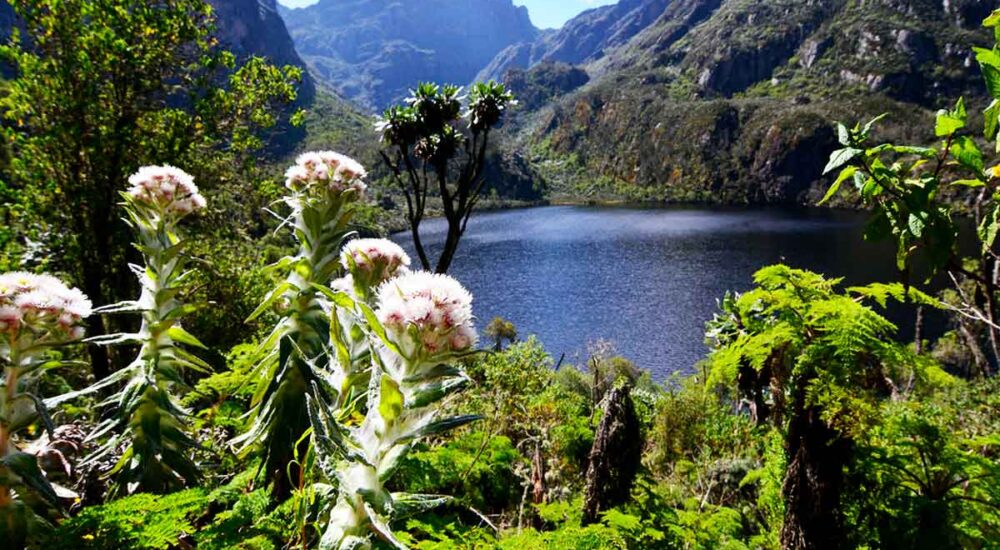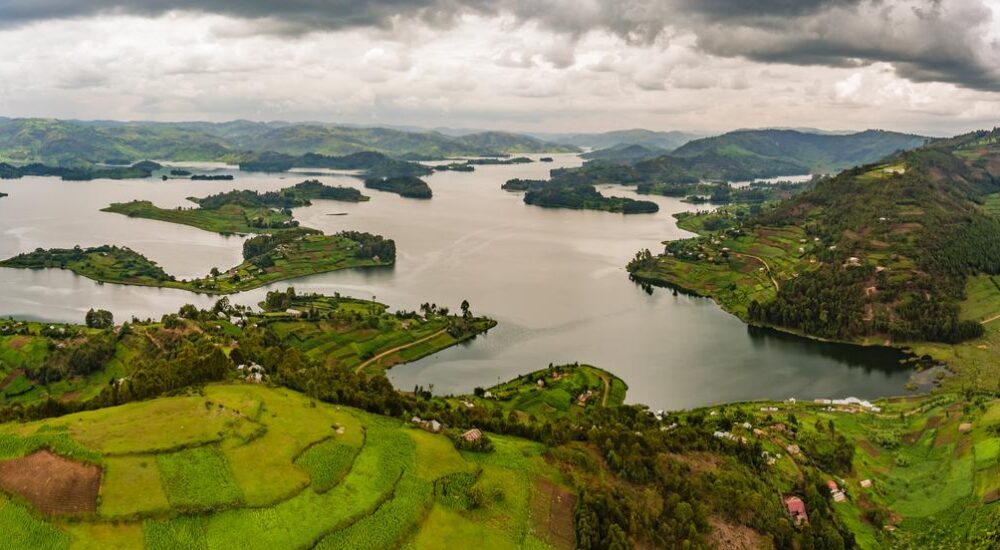Vegetations of Rwenzori Mountains - Discover the Vegetation and Adventures of the Rwenzori Mountains The…
How to Plan Your First Uganda Safari
To reap the greatest benefits from Uganda’s diverse, one-of-a-kind, and secret attractions, plan ahead of time. Here are full instructions for planning your first Uganda safari.
A safari vacation in Uganda is most likely the most planned adventure vacation. While it is possible to travel to Uganda, rent a car, and drive into the countryside, this is unusual for first-time tourists to Uganda. Visitors do not want to be alone on unmarked dirt roads patrolled by armed rangers, gorillas, and chimps.
Use safari professionals to assist you in planning your schedule and arranging transportation, meals, and lodging. When you arrive at the airport, your local outfitter will have a driver waiting for you. After that, you’ll be in the hands of pros who will oversee your whole journey and bring you up close and personal with dangerous monsters. For your first safari in Uganda, you’ll be astonished at how easy they make the experience. Consider the following advice from local pros.
- Determine The Journey’s Duration
- Find out the costs
- Which animals to see on safari
- Your accommodation and meals
- The local guides
- Clothing and stuff to pack
- Plan with a licensed safari company
Determine the journey’s duration
Plan to spend at least eight days on your first Uganda safari visiting primate hotspots in southern Uganda. This should allow you to stay at least two nights in each location to view chimps, animals, and gorillas.![]()
On this safari tour, you may generally stroll with chimps in Kibale Forest, go on a wildlife drive, have a boat safari, and spend fantastic moments with mountain gorillas.
Plan to stay at least two weeks if you want to visit Uganda’s more extended safari circuit and see the primates. Every day, you’ll spend long morning and evening hours trekking through jungles or traveling on wildlife game trucks. So, spending two full days in each wildlife reserve ensures that you’ll see a lot.
With Uganda’s warm weather, you’re certain to see a lot of huge animals without being interrupted by severe rains. During the dry seasons, Uganda’s jungles guarantee views of chimpanzees, gorillas, and other primates. The three primary parks are home to elephants, hippos, giraffes, buffalos, and lions. Some of the greatest big cat sightings may be found in the dry Kidepo Valley in the far northeast.
Find out the costs
“I don’t see why safaris are so pricey; it’s not like you pay the gorillas and buffalos,” one visitor once complained. Well, distance and a lack of infrastructure make travel difficult and will undoubtedly increase trip prices.![]()
The average day Uganda safari cost per person ranges from USD 200 to well over $1,000 and usually includes government permits, lodging, and transportation between attractions. International airfare is often not included in the estimate.
The gorilla permit, which costs $700 or $1500, is the most expensive part of the trip. Most lodges will include meals for those with particular dietary needs in the accommodation charge, which ranges from approximately $65 to more than $1,000 per night.
The guides, drivers, and service providers are paid by your tour organization. Expect to pay between $50 and $300 per day for extra activities and meals, and between $100 and $300 per day for a 4×4 car with petrol and a driver/guide. Your tour manager and lodging operators will advise you on how much you should spend on tips.
Which animals to see on safari
Uganda is a one-of-a-kind safari location with a superb combination of savannah and woodland wildlife encounters. Mountain gorillas and chimps are the main attractions, although numerous lesser primates may also be observed.![]()
Uganda has the greatest primate encounters in the world. Across western Uganda, twenty primates species leap and traverse the jungle canopy. Patas monkey, l’Hoest’s monkey, red-tailed monkey, golden monkey, red colobus, mangabey, and even the country-wide distributed black-and-white colobus are some of the specialties you may see on your forest walking experience.
Uganda also has excellent safaris for viewing savannah wildlife. There are the Big Five (elephants, leopards, rhinos, and Cape buffalo). Lions are fairly prevalent in the national parks of Murchison Falls, Queen Elizabeth, and Kidepo Valley, where they hunt on plentiful antelope. Elephants, leopards, and Cape buffaloes
Accommodation and meals
Accommodations range from hostels to luxury forest lodges near popular park entrances like as Bwindi Impenetrable, Kibale Forest, and Queen Elizabeth National Parks. You’ll be spoiled for choice, but you should leave the lodging choices to your travel company, which will also arrange bookings for you. Accommodation for gorilla trekking is a little more expensive, ranging from $200 to more than $1000 for a nice night with meals.![]()
In the savannah parks, you’ll discover tented camps and lodges, clusters of private cabin-type single ensuite cabins, and one or two large structures for public spaces like dining. The lodge rooms are generally rather nice, with private bathrooms equipped with warm showers and flush toilets. All meals will be served at the resort. Most resorts include standard amenities, sunscreen, and bug repellent.
The local guides
Most Ugandan tour operators will include a local guide who will drive you between locations, organize your safari experience, and provide you with pertinent information along the way. The guide is frequently in contact with the lodges and your trip planner via cell phone, ensuring that everything runs well and surpasses your expectations.![]()
Guides will be provided by the Uganda Wildlife Authority or the lodges elsewhere. They are highly trained individuals who know their locations and the finest places to view animals. You can pay an additional fee to have your own vehicle or share one with other guests. However, this is usually included in the price of your all-inclusive trip.
Clothing and stuff to pack
Packing a few fast-drying nylon garments can help you minimize packing space and reduce your luggage to a tiny duffel bag. Consider that tiny planes that fly between parks can only carry 15 kilograms and will charge you for extra weight. Safari vehicles are also limited on space.![]()
Several lodges offer laundry service, which is normally done by hand and dried in the sun. They’ll usually leave a laundry basket with instructions in your room, and you’ll be expected to clean your own underwear.
Forget what stag pictures and movies tell you; you don’t have to bring an all-beige clothing for your first Uganda safari. Carry a wardrobe that evokes feelings of enchantment. Furthermore, most animals have difficulty distinguishing between colors. Western Uganda safari areas may be cool in the mornings and late evenings but scorching in the middle of the day, so wear in layers that you can remove or put back on. Check out our comprehensive packing list.
Plan with a licensed safari company
Even for seasoned safari travelers, negotiating Uganda’s travel procedures, especially when planning, may be a headache. Most people advocate booking your first Uganda safari through a licensed travel operator.
Local safari operators are well-versed in their destination. They reside there, have traveled widely, and organize safari tours for a living. They are an excellent source of information on the most important places to visit, where to stay, when to go, hidden gems, and how to navigate local logistics.
You may rely on Monumental Expeditions and Safaris to provide any recommendations and assist you in planning your whole vacation. They’ll take your financial worries into account and make sure they don’t go overboard.
Most first-time Uganda safari visitors prefer to work with a firm that manages many camps. Monumental Expeditions and Safaris is one such company. They own two hotels that are strategically located for superb gorilla trekking excursions. Some are at Entebbe, where you enter Uganda and need to relax before heading out into the countryside. The other ones lay on the outskirts of Bwindi Impenetrable National Park, where you’ll get up and personal with the amazing mountain gorillas.
Whoever assists you in planning your first Uganda safari vacation will also arrange for transportation from one distant camp to another. They frequently transport you in four-by-four safari vehicles, tiny aircraft, or both.
Ready to start planning your first Uganda safari?
As long as you don’t intend to do it yourself, booking your first Uganda safari with pros like Monumental Expeditions and Safaris should be a breeze. When you send us an email or text at info@gorillatrackings.com, one of our many local specialists immediately starts working on sending you a quote with recommendations that fit your dates and budget.
When planning your safari itinerary, Monumental Expeditions professionals will keep our fundamental principles in mind: being adventurous, having fun, being active, and keeping things private.


